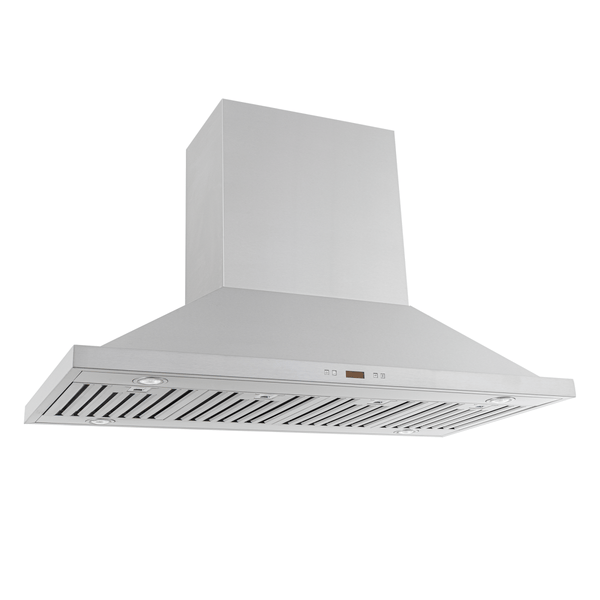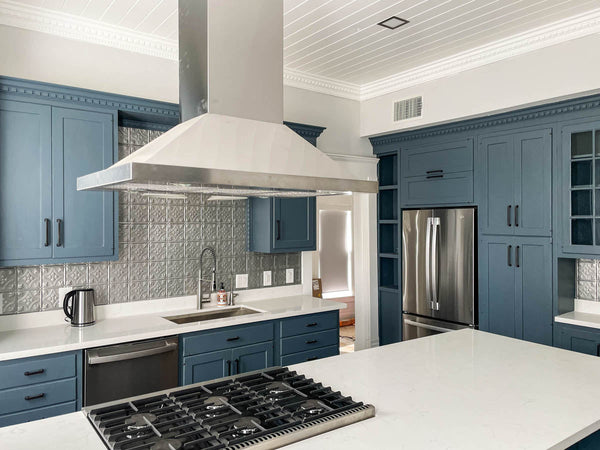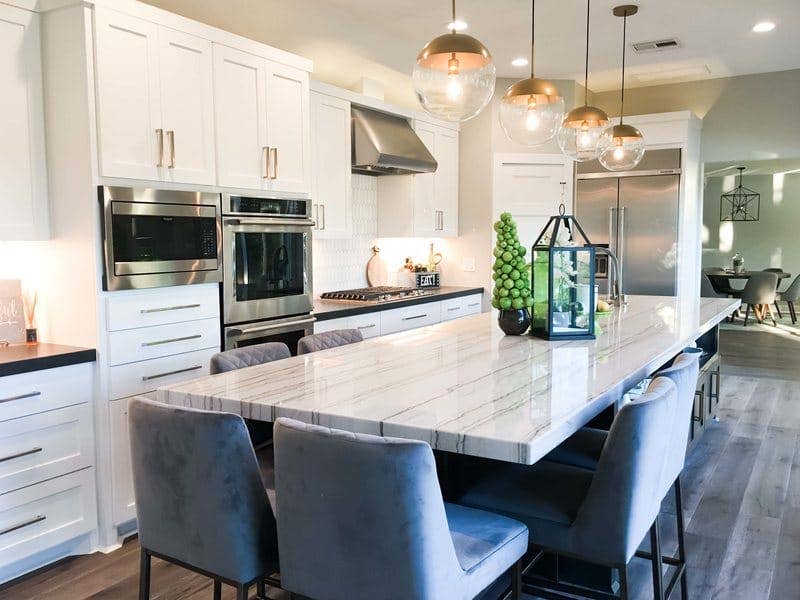Under cabinet range hoods are a modern and functional alternative to your over-the-range microwave. They add value to your home and remove all the pesky cooking exhaust and odors from your kitchen.
Of course, a range hood doesn’t heat your food, so you might have asked yourself: Where can I put my microwave? I still need one!
Luckily, you have many different options when it comes to relocating your microwave. We’ll go over five places where you can move your microwave. Soon you’ll be able to enjoy the benefits of a microwave and a vent hood!
1. In the Wall

One option you have is to install a built-in microwave in the wall. A built-in microwave can go inside your wall or cabinet. They typically come with a microwave trim kit, which is the housing around the microwave.
Built-in microwaves can either stand alone or you can pair them with a wall oven. Some over-the-range microwaves can be installed next to a wall oven, but not all. You’ll want to double check with the manufacturer before you try and install an over-the-range or countertop microwave as built-in.

2. In a Cabinet
You can also install a built-in microwave inside a cabinet. These microwaves are just like OTR microwaves. Except you can install them wherever you want in your cabinetry. So you can save cabinet space in your cooking area.


You’ll also reduce additional traffic around the stove area. If you live with multiple people or kids, you might want to stray away from an OTR microwave. This way you won’t have to worry about them coming in and out of the space you are using while cooking.

You can also install a microwave drawer into your lower cabinets. These are built-in microwaves that look a lot like ovens. Some have a long handle at the top like most ovens. Others are flat and you can press on the front to open the door. Typically, microwave drawers are installed below your countertops, like a dishwasher.
Are built-in microwaves a standard size?
Built-in microwaves have three standard sizes: 24”, 27”, and 30”. They match the size of most kitchen cabinets and wall ovens to make installation easier.
Can any microwave be built-in?
Not all microwave ovens can be built-in microwaves. You need a microwave trim kit and the appropriate size of microwave to install it in a wall or cabinet. Read the manufacturer’s instructions to see if your microwave can be installed inside the wall. Not all OTR microwaves can be installed as built-in microwaves.
Can you put a countertop microwave in a cabinet?
You can put some countertop microwaves in cabinets, but not all. Make sure that the microwave is ventilated, that you can safely run electricity to it, and that your cabinet supports its weight. Before you put a countertop microwave in a cabinet, talk to the manufacturer.
What does a microwave drawer do?
A microwave drawer is a built-in microwave that you can open and close, like a drawer. It does not have a hinged door and vent like an OTR microwave. Drawer microwaves save space over your kitchen range so you can have room for a professional vent hood.
Can a warming drawer replace a microwave?
Yes. In fact, it can heat up certain foods better than a microwave. Have you ever tried to microwave fries, fried chicken, and baked goods? It doesn’t work too well. The fries don’t get crispy and baked goods lose their moisture.
Quality warming drawers have advanced temperature control. They heat the food up properly and keep it at the right texture.
The main downside to warming drawers is that they are much more expensive than microwaves. They typically range from $1,000 to $2,000. So if you don’t do a lot of baking or host many parties and gatherings, you’re better off with a traditional microwave.
3. Behind a Cabinet Door
If you’d like, you can hide your microwave in a cabinet. Some microwaves have a unique cabinet door with hinges. It lifts up, revealing your microwave. You don’t need this style of door but it’s a nice modern touch. You can go with a traditional cabinet door if you’d like.
4. On the counter

The simplest place to put your microwave is on the counter. A countertop microwave is a freestanding microwave that goes on your countertop. They are the most simple and affordable alternative to an OTR microwave. Microwave drawers and built-in microwaves are more custom so they can get pricey.
With a countertop microwave, installation is easy. You just need a space for it on your counter and an outlet to plug it in. If you want to hardwire your microwave, contact the manufacturer to make sure it’s safe to do so.
Your best bet is to stick with the way the microwave is designed. If it comes with a plug, use the plug. If not, hardwire it. But be sure to consult a professional first!
Are built-in and countertop microwaves the same?
No. Built-in microwaves are designed to be inside your wall or cabinet, while countertop microwaves sit on your counter. Some countertop and OTR microwaves can be installed as built-in microwaves. But check the manufacturer’s instructions to make sure.
Do countertop microwaves need a vent?
No, countertop microwaves do not need a vent. If you mount a range hood over your stove, it will remove all the pesky smoke and cooking odors.
5. In the pantry
If your pantry is close by, this is a great option! It conceals your microwave entirely, like putting it behind a cabinet. You’ll have less space in your pantry but more counter space or kitchen cabinet space.
If you use your microwave a lot, it’s especially important that it’s accessible. Depending on your home design, your pantry might not be as accessible. If you have to walk across the kitchen to use it, you are better off going with another option on this list.
Are you ready to decide on a microwave? Which one do you think works best for you?
If you’re replacing your OTR microwave, you’ll want a range hood. Here are some articles to help you figure out which hood is right for you.
How many CFM do I need for my range hood?
Ultimate 30 and 36 Inch Range Hood Guide
What size range hood do I need? - Complete Guide
Good luck with the renovation!
Related Articles
How to Clean a Microwave Filter











